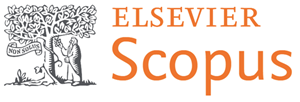Barriers to Embrace Multidisciplinary Learning Experience in Interior Architecture Design Module
DOI:
https://doi.org/10.24191/bej.v21i2.920Keywords:
Multidisciplinary learning experience, Collaborative learning, Interior Architecture, Design studio module, Explanatory case study, Reflective writingAbstract
A multidisciplinary learning experience is an approach to curriculum integration which values the ideas of collaboration across multiple disciplines in response to the Fourth Industrial Revolution (4IR). The 4IR has effectively widened the division between fields in which graduates are expected to perform desired skill and knowledge. This paper aims to determine the barriers encountered by the Interior Architecture Students embracing the multidisciplinary learning experience with students from other discipline. Through an explanatory case study approach, the emergence of approach curriculum comprised of three programmes in the built environment at a private university will be presented. The paper concludes with reflective writing addressing the barriers faced by the Interior Architecture students during the multilearning experience. Findings of the study revealed the majority of students identify communication, time-management, responsibility, attitude, and teamwork as the most significant barriers encountered by Interior Architecture students in the implementation of the MLE approach in the Design Studio module. Developing strong communication skills, allocation in managing the time, team player roles and responsibility are essential trait that must be constantly fostered. These findings help to assist interior architecture educators in developing courses that integrate various disciplines and provide academics with a deeper understanding of the conceptualisations and practices of the multidisciplinary learning experience concept approach by identifying the barriers that hinder its implementation.
References
Abdallah, K. (2022). A Strategy for Teaching Interior Design Through Reality-Based Project, International Design Journal, Vol. 12 No. 4, pp 93-104. DOI:10.21608/idj.2022.245855
Astute, A.P, and Aziz, A. (2019). Preparing 21st Century Teachers: Implementation of 4C Character’s Pre- Service Teacher through Teaching Practice. International Seminar on Science Education. Journal of Physics Conference Series.1233. DOI:10.1088/1742-6596/1233/1/012109
Baltter, J., Haverland, M. (2012). Two or three approaches to explanatory case study research? Annual Meeting of the American Political Science Association, New Orleans.
Besch, M.K and Olsson, A (2016). Students’ learning experience in multidisciplinary project groups: Insights from a packaging development course, in Proc. LTH:s 9:e Pedagogiska Inspirationskonferens, pp. 26-28
Challenge Insight Report (2016). The Future of Jobs Employment, Skills and Workforce Strategy for the Fourth Industrial Revolution. (World Economic Forum) p3.
Doukanari, E., Ktoridou, D., Efthymiou, L, Epaminonda, E. (2021). The Quest for Sustainable Teaching Praxis: Opportunities and Challenges of Multidisciplinary and Multicultural Teamwork. Special Issue Technology and Innovation Management in Education. https://doi.org/10.3390/su13137210
Darmuki, A. & Hidayati N.A. (2019). An Investigation of The Cooperative learning using audio visual media in speaking skill subject. ICSTI, p 121-126. http://dx.doi.org/10.4108/eai.19-10-2018.2282555
Greenhill, V. (2010). 21st Century Knowledge and Skills in Educator Preparation. Partnership for 21st Century Skills Pearson. (Washington DC) p9.
Hero, L.M., Lindfors, E. (2019). Students’ Learning Experience in a Multidisciplinary Innovation Project, Education + Training Vol. 61 No. 4, p 500-522.
Heikkinen J. and Isomottonen V. (2015). Learning mechanisms in multidisciplinary teamwork with real customers and open-ended problems. European Journal of Engineering Education, vol. 40, no.6, pp. 653-670. https://doi.org/10.1080/03043797.2014.1001818
Hei, M.D, Strijbos, J. W., Sjoer,E., and Admiraal, W. (2016). Thematic review of approaches to design group learning activities in higher education: the development of a comprehensive framework. Educational Research Review, vol. 18, pp. 33–45. https://doi.org/10.1016/j.edurev.2016.01.001
Joachim, S. and Petra, B. S. 2004. Thinking in design teams-an analysis of team communication. Design studies, 23, p 473-496. https://doi.org/10.1016/S0142-694X(02)00004-2
Laal, M. and Laal, M. (2012). Collaborative Learning: What is it? Procedia: Social and Behavioral Sciences, 31, p 491-495.
Linder, C. and Marshall, D. (2003). “Reflection and phenomenography: towards theoretical and educational development possibilities”, Learning and Instruction, Vol. 13 No. 3, pp 271-284. https://doi.org/10.1016/S0959-4752(02)00002-6
Lien, B.L, (2020). The bumpy road to implementing cooperative learning: Towards sustained practice through collaborative action. Cogent Education, vol. 7, no. 1, pp. 1-17
Mathews, S.J., Lee, M.A., Kreidler, N. (2022). Creating a multidisciplinary collaboration service - learning experience in design Education. International Design Conference, Cambridge University Press. DOI: 10.1017/pds.2022.232
McKenney, S. and Reeves, T. (2019). Conducting Educational Design Research, New York: Routledge
Meijer, H., Hoekstra, R., Brouwer, J. and Strijbos, J.W (2020). Unfolding collaborative learning assessment literacy: A reflection on current assessment methods in higher education, Assessment & Evaluation in Higher Education, vol. 15, pp. 1222-1240. https://doi.org/10.1080/02602938.2020.1729696
Nigel, C. and Anita, C. C. (1995). Observation of teamwork and social processes in design. Design studies, 16, 143-170.
Osmond, J. Darlington, Y. (2005). Reflective analysis: Techniques for facilitating reflection. Australian Social Work. Vol. 58, No. 1
Pratt, M. (2012). Evaluation of Interdisciplinary Collaboration in Design Research. Dillon Beach, CA: Foundation for Critical Thinking Press. p 44
Sliogeriene, J. (2012). Students’ Reflection analysis in portfolio-based learning. Santalka:Filologija, Edukologija 2020.
Soliman, A. M. (2017). Appropriate teaching and learning strategies for the architectural design process in pedagogic design studios. Frontiers of Architectural Research, 6(2), 204-217. https://doi.org/10.1016/j.foar.2017.03.002
Thian, L.B., Choong, W.K., Chang, Y. H. (2022). Entrepreneurship through Multidisciplinary Learning: A Cooperative Procedural Framework for Implementation. International Journal of Information and Education Technology, Vol. 12
Tang, H. and Hsiao, E. (2013). The advantages and disadvantages of multidisciplinary collaboration in design education. (Taiwan) p1-10
Downloads
Published
Versions
- 06-08-2024 (2)
- 01-07-2024 (1)
How to Cite
Issue
Section
License
Copyright (c) 2024 Norji Nasir, Kamal Rabah Mustapha Kamal

This work is licensed under a Creative Commons Attribution-NonCommercial-NoDerivatives 4.0 International License.
CC BY-NC-ND 4.0 DEED
Attribution-NonCommercial-NoDerivs 4.0 International












